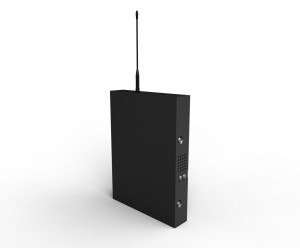Repeaters: Do You Need Them?
After purchasing your Sapling Synchronized Clock System, you need to make the decision as to exactly where in your facility each clock will go. You may choose these locations based on a variety of other reasons. For example, some teachers may want clocks in the front of the room for all students to see, while others may prefer to leave it in the back of the class to minimize distraction. Regardless of where in the facility you choose to put your clocks, however, you will want to be certain that they are within-range of the wireless signal from the master clock. Fortunately, with Sapling wireless clocks, this is not an issue you need to worry about.
With many manufacturers, this sincerely limits the placement of your clocks. You must make sure that they are within a certain distance of the master clock and are not being obstructed by objects that may interfere with the wireless signal. Sapling wireless clocks allow you to have a wider range of placement options because all of our wireless clocks have built-in transceivers, meaning that not only do they receive the wireless signal, they then pass the wireless signal on in turn. This greatly increases the range of the wireless signal and allows you to place your clocks further from the master clock.
However, while Sapling Wireless Clocks provide the best coverage possible without added accessories, there are times in which the transceivers might not get to those hard to reach places. Sometimes you may need the wireless signal to stretch further, but there is no ideal place to put a clock to continue that signal. A wireless repeater, which is shaped like a small black box, can be used in its place. Additionally, they send out a stronger signal than the transceivers in the clocks, which can help pass the signal through certain barriers.
Other times, there may be facilities such as a hospital or school campus in which buildings are spread far apart, or perhaps a building is made up of a significant amount of concrete or rebar, that will hinder the wireless signal from traveling adequately. In this case, network repeaters are the ideal solution. With network repeaters in each building of your campus, every clock in your facility will stay synchronized, even if they are located in different buildings by taking a time signal through a network connection and re-distributing it wirelessly to other clocks in that building.
Due to the advanced technological innovations comprising Sapling Wireless Clocks, you will not have to worry about your wireless signal failing to reach every clock in your facility or becoming disrupted. However, there are rare occasions when the wireless signal from the master clock needs a bit more assistance getting to each individual clock in the system, particularly in a campus setting in which buildings are spread apart. Depending on your application, look into wireless or network repeaters to ensure that your wireless signal remains uninterrupted if necessary.

